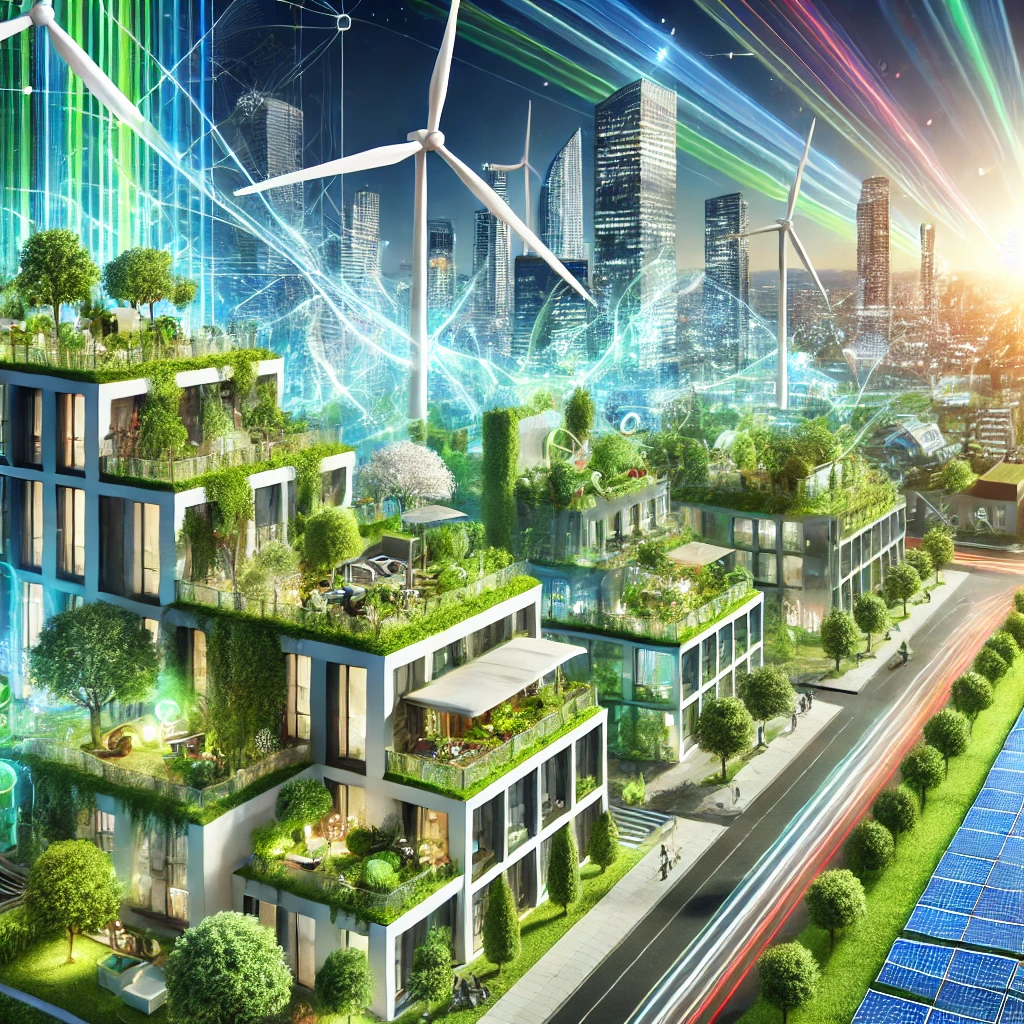
Sustainable Architecture Trends That Are Changing Cities
Discover how green technology and energy-efficient innovations are revolutionizing urban landscapes.
1. Introduction to Sustainable Architecture
What if the buildings around us could actively combat climate change? Sustainable architecture is more than just a buzzword—it’s a movement that’s reshaping cities worldwide. With energy-efficient innovations and green technology leading the way, cities are evolving into eco-friendly hubs.
2. The Role of Renewable Energy in Modern Architecture
Integrating renewable energy insights into urban design is crucial. Architects and city planners are now incorporating solar power for homes, wind turbines on skyscrapers, and even kinetic energy floors that generate power as people walk on them.
3. Solar Power for Homes: A Game Changer
The benefits of using solar energy at home are undeniable. Solar panels have become more affordable and efficient, making them a key feature in sustainable architecture. Plus, net-zero energy buildings—structures that generate as much power as they consume—are on the rise.
4. Smart Buildings: The Future of Urban Spaces
Imagine buildings that adjust their temperature based on occupancy, lighting that dims when no one is around, and self-sufficient water systems. Smart buildings use AI-driven energy-efficient innovations to optimize resources and reduce waste.
5. Green Roofs and Vertical Gardens
More cities are embracing vertical gardens and green roofs to combat urban heat islands. These lush spaces improve air quality, provide insulation, and even offer sustainable food production in urban areas.
6. Top Green Building Techniques Transforming Cities
Eco-friendly materials, passive design strategies, and top green building techniques like cross-laminated timber (CLT) are making construction more sustainable. These innovations are reducing carbon footprints while enhancing energy efficiency.
7. Energy-Efficient Appliances in Sustainable Homes
Modern eco-friendly homes now integrate energy-efficient appliances that consume less power while maintaining high performance. From smart thermostats to advanced water-saving devices, these innovations are making sustainable living easier.
8. The Role of Best Electric Vehicles in Urban Design
Transportation is a huge factor in sustainability. With the best electric vehicles of 2025 entering the market, cities are prioritizing EV-friendly infrastructure. Charging stations, solar-powered roads, and bike-friendly pathways are becoming the norm.
9. Net-Zero and Carbon-Neutral Buildings
Buildings are among the largest contributors to carbon emissions. The shift towards net-zero and carbon-neutral structures is accelerating, thanks to innovations in insulation, passive heating, and renewable energy sources.
10. Climate Change Solutions Through Sustainable Urban Planning
Urban sprawl and inefficient city designs contribute to climate change. Sustainable architecture integrates climate change solutions such as better public transport, energy-efficient street lighting, and community-driven sustainability projects.
11. Prefabricated and Modular Homes: The Future of Housing
Prefabricated and modular homes are revolutionizing the housing market by reducing waste and improving energy efficiency. These homes are designed with sustainability in mind, often incorporating smart technologies and renewable energy sources.
12. How to Live a Zero-Waste Lifestyle in an Urban Setting
Living sustainably in a city is possible with the right mindset. Simple steps like composting, reducing single-use plastics, and choosing eco-friendly transport options can contribute to a greener planet.
13. The Impact of Green Technology Reviews on Urban Development
With the rise of green technology reviews, consumers and developers alike are making informed choices about sustainable materials, appliances, and systems. Transparency in eco-friendly innovations is driving better urban planning.
14. Challenges and Opportunities in Sustainable Architecture
Despite its benefits, sustainable architecture faces challenges such as high initial costs, policy hurdles, and limited public awareness. However, as climate concerns grow, governments and investors are prioritizing green solutions.
15. Conclusion: The Future of Sustainable Cities
It’s clear that sustainable architecture is not just a passing trend—it’s the future of our cities. By embracing renewable energy, energy-efficient designs, and green technologies, we can create urban spaces that benefit both people and the planet.
FAQs
1. What are the main benefits of using solar energy at home?
Solar energy reduces electricity bills, decreases reliance on fossil fuels, and contributes to a sustainable future.
2. How can I make my home more energy-efficient?
Use energy-efficient appliances, install better insulation, switch to LED lighting, and integrate smart home technology.
3. What are the best electric cars for an eco-friendly lifestyle?
Some of the best electric vehicles in 2025 will include models with longer range, faster charging, and improved battery technology.
4. What are the top green technologies shaping the future?
Smart grids, energy storage systems, biodegradable materials, and AI-driven energy management are among the leading innovations.
5. How can I start living sustainably in a city?
Reduce waste, use public transport or electric vehicles, support green businesses, and advocate for sustainable city policies.